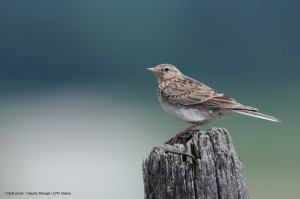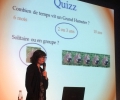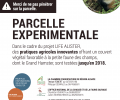Sky Larks serving the European Hamster
25 mars 2015The main goal of the LIFE ALISTER Project is to work on changing cultural practices in order to preserve the European Hamster. The impact of these actions on parcels tested is carried out by the ONCFS through an annual census of European Hamsters, but that is not enough.
To ensure the sustainability of European Hamster preservation actions, a true improvement of the quality of the environment must be noted; for this there is a bird that indicates good biodiversity: the Sky Lark.
These species is present in almost all of France. The variable population densities reflect the quality of the environment:
- Generally speaking, this species is much more abundant when agriculture is extensive and varied.
- As nests are located right on the ground, they are exposed to tractors and other agricultural equipment as well as land farming with phytosanitary products.
- As sky larks mostly eat insects during their period of reproduction, the abundance and diversity of its food resources are directly linked to various farming modes.
Between 1989 and 2009, the population of Sky Larks fell by 20% in France (STOC-EPS Programme of the National Museum of Natural History). Alsace followed this trend in its prairie lands as well as in its farmlands.
 How are Sky Larks counted?
How are Sky Larks counted?
The method consists of walking through a parcel of roughly 100 hectares and noting on the map the number of birds observed. This operation is renewed several times in the reproduction season (three times from March to May) as well as during the post-nuptial migration period (twice in October). This methodology shows the limits of each couple’s territory as well as the occupancy of these parcels during migration.
This assessment will measure the evolution of nidification as well as the Sky Lark’s migratory halts on European Hamster test zones.
For relevance, this study will be carried out by the Alsace Ligue pour la Protection des Oiseaux [Alsace Bird Protection Association], and will end in 2017.
The Sky Lark (Alauda arvensis), is a bird easily found in open farmlands, and one that can respond rapidly when its environment is modified. This migrating species can be found in Alsace from March through October, and its nesting period is from April through July.
It has a wingspan of 35 cm and weights 40 to 50 g.
The Sky Lark’s feathers blend in easily with its environment, serving as camouflage. It is brown with brown-black feathers on the back with a slightly darker crown (top of its head) and has a small crest; its stomach is white and its chest has fine black stripes.




